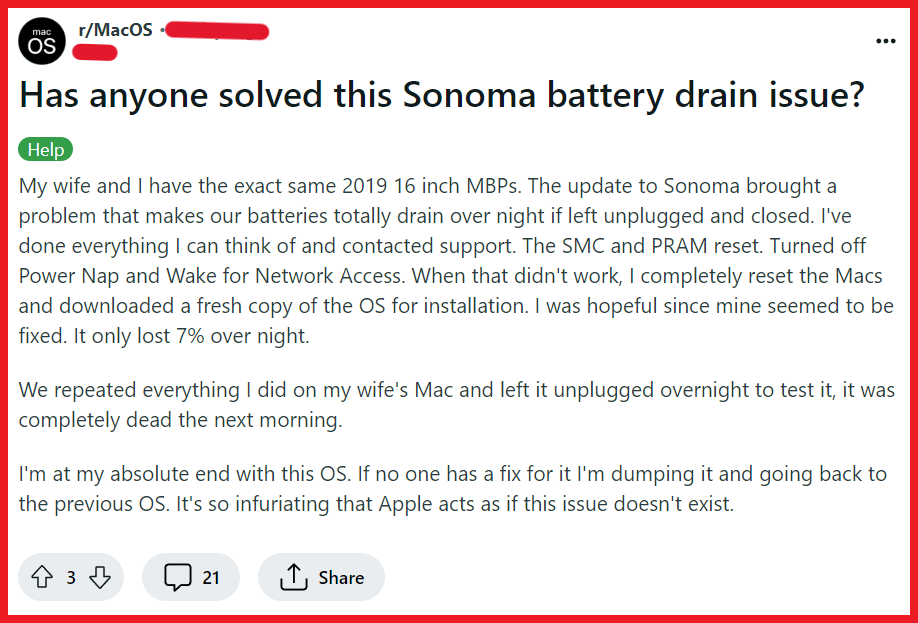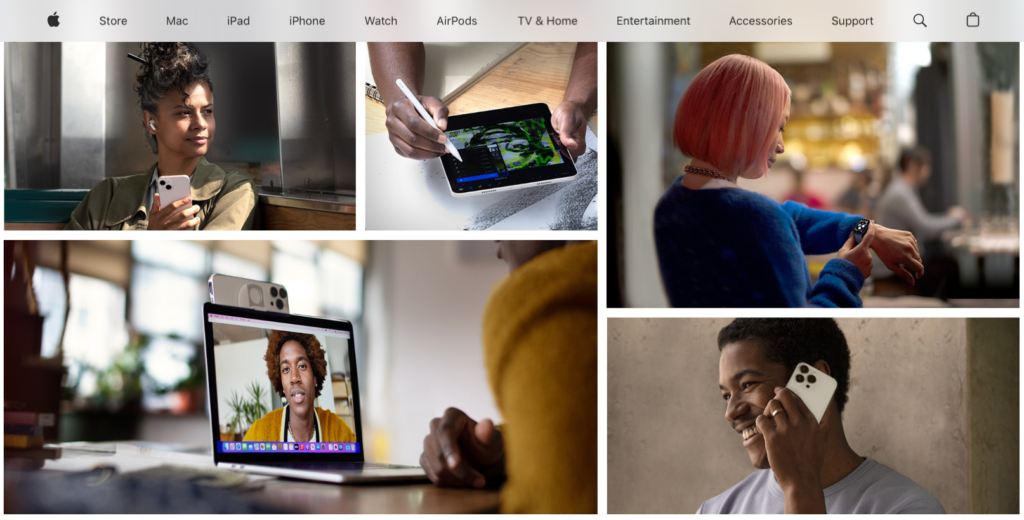Are you experiencing frustrating battery drainage on your MacBook, iMac, or Mac mini running macOS Sonoma?
If so, you’re not alone. Many users have encountered this issue, impacting the performance of their devices.
In this blog, we will go through effective solutions to address the macOS Sonoma draining battery problem, providing you with practical methods to optimize the battery life of your device and ensure a smooth user experience.
How To Fix MacOS Sonoma Draining Battery Issue?

To fix macOS Sonoma draining battery issue you can reduce screen brightness, turned on optimized battery charging, and manage peripheral devices. Additionally, you can calibrate your battery, and disable startup items.
1. Reduce Screen Brightness
High screen brightness is a significant power drain. Lowering the brightness can lead to less energy consumption and a longer battery life.
Dimming your screen brightness can be one of the simplest ways to conserve battery power on your Mac.
- Press the “F1” key to lower the screen brightness to a comfortable level that still allows you to see the screen clearly.
- Alternatively, you can adjust the brightness in “System Preferences” under “Displays.”

2. Turn On Optimized Battery Charging
Optimized Battery Charging helps to slow down battery aging by learning your daily charging routine and controlling the charging process accordingly.
Activating this feature can prolong your MacBook’s battery lifespan and reduce the chances of experiencing a quick battery drain.
- Go to “System Settings” and select “Battery.”

- Click on “Info” button next to Battery Health in the sidebar, then check the box for “Optimized battery charging.”
3. Manage Peripheral Devices
Connected devices and peripherals can draw power from your Mac, contributing to quicker battery depletion.
Disconnecting unnecessary peripherals can help preserve your Mac’s battery life.
- Eject any external drives or devices that are not in use.
- Unplug peripherals like external keyboards, mice, or webcams when they’re not needed.
- Avoid charging other devices, like smartphones or tablets, through your Mac’s USB ports if your Mac’s battery is low.
4. Calibrate Your Battery
Battery calibration can help maintain the accuracy of the battery’s status indicator and its performance over time.
Calibrating your MacBook’s battery can ensure it provides accurate readings and maintains optimal charging patterns.
- Fully charge your Mac’s battery and keep it plugged in for at least two hours.
- Disconnect the power adapter and use your Mac until the battery is completely drained — your Mac will shut down automatically.
- Let your Mac rest in the turned-off state for at least five hours.
- Recharge your Mac’s battery to 100% without interruption.
5. Disable Startup Items
Some applications automatically open upon startup, potentially using up battery power unnecessarily.
Disabling these can help speed up the boot time and save battery life since fewer processes will run in the background.
- Open “System Preferences” and go to “Users & Groups.”
- Click on your username and then select the “Login Items” tab.
- Select the applications you want to prevent from opening at startup and click the “-” button to remove them.
6. Turn On Low Power Mode
Low Power Mode reduces energy usage by adjusting system settings and reducing system performance where possible.
This mode can extend battery life when you need that extra time before you can charge your Mac again.
- On your Mac, choose Apple menu > System Settings.

- Click Battery in the sidebar. (You may need to scroll down.)
- Click the pop-up menu next to Low Power Mode on the right.

- Choose Always, Only on Battery, or Only on Power Adapter depending on your preference.
7. Turn Off Bluetooth And Wi-Fi
If you’re not using Bluetooth devices or Wi-Fi, turning them off can save a significant amount of power.
Disabling these wireless technologies can prevent unnecessary searches and connections that drain the battery.
- Click on the Bluetooth icon in the menu bar and select “Turn Bluetooth Off.”

- Click on the Wi-Fi icon in the menu bar and select “Turn Wi-Fi Off.”

8. Reboot Your Mac
Sometimes, a simple reboot can fix battery-draining issues by closing applications and processes that are using excessive energy in the background.
Rebooting your Mac can clear temporary files and resolve persistent processes that may be affecting battery performance.
- Click on the Apple menu in the top left corner of your screen and choose “Restart.”

- Wait for your Mac to shut down completely, then turn it back on.
9. Update Your Apps
Outdated applications may not be optimized for the latest macOS version and can drain more battery than necessary.
Ensuring all your apps are up to date can improve their efficiency and compatibility with the latest energy-saving features.
- Open the “App Store” app on your Mac.

- Click on “Updates” in the sidebar to check for available updates.
- Click “Update” next to each app or “Update All” to download and install the latest versions.
10 Contact Apple Support

If you’ve tried adjusting your Mac’s settings and still experience issues with your battery, contacting Apple Support may be a helpful next step.
The support team can provide personalized assistance, potentially diagnosing any deeper software or hardware issues that may be affecting your battery’s performance.
